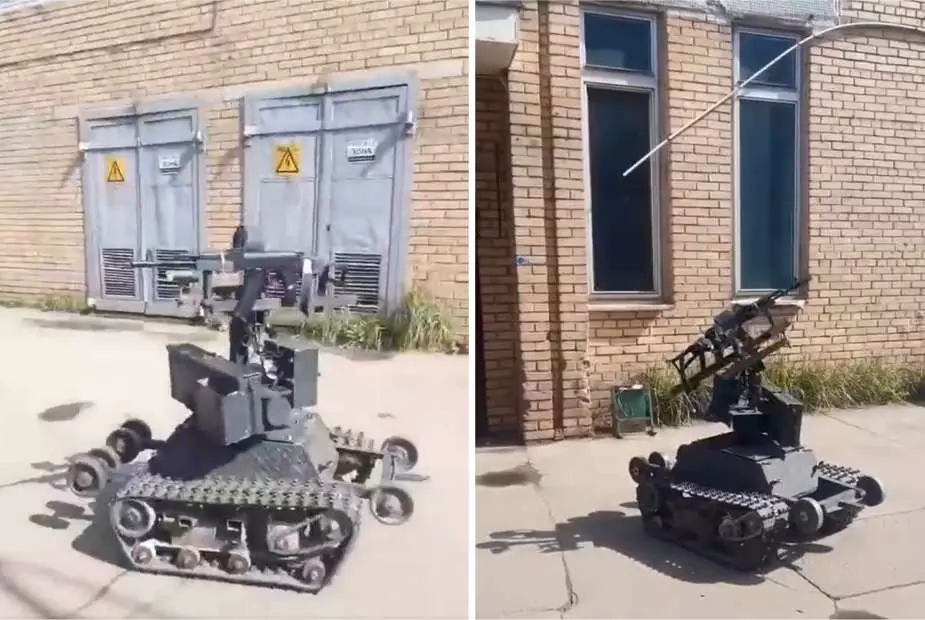Breaking news
New Unmanned Ground Vehicles UGV Produced in Russia.
A tweet from Samuel Bendett dated August 29, 2023, describes a Russian DIY Unmanned Ground Vehicle (UGV) capable of carrying up to 100 kg with a two-hour operational duration. The origin of this UGV is unclear, as is the number of units produced. This tweet highlights the growing trend of DIY UGVs appearing on the front lines, not only in Russia but also in Ukraine.
Follow Army Recognition on Google News at this link

Unmanned Ground Vehicles UGV from Russia (Picture source: Twitter account of Samuel Bendett )
Before diving into the latest developments, it's essential to understand what a UGV is. An Unmanned Ground Vehicle is a land-based machine that operates without a human driver. These vehicles can be remotely controlled or function autonomously thanks to artificial intelligence. UGVs have various applications, ranging from reconnaissance and surveillance to combat roles where they can carry weapons and explosives. We already talked to you about Ukrainian UGVs on Army Recognition dated 30 August 2023.
The use of UGVs in Ukraine is not a new phenomenon, but it has recently gained significant traction. The role of unmanned aerial vehicles has dramatically increased in the Ukraine war, and attention is now turning to ground drones. Ukrainian engineers like 22-year-old Yevhen Hnatok have already supplied several dozen remote-controlled ground vehicles for the armed forces. These UGVs vary in size and capability, with some capable of carrying anti-tank mines or remotely operated machine guns up to 10 km away from their operator.
The primary goal of these UGVs is to save lives by replacing as many troops as possible on the front lines. They offer a low-cost alternative, with parts for smaller machines costing less than $812. The impact of combat UGVs has been limited so far, but the sector is one to watch, as both sides are investing in this technology.
Unmanned Aerial Vehicles (UAVs) have already proven their effectiveness in the Russo-Ukrainian conflicts. Therefore, the development of UGVs is the logical next step, and engineers from both countries hope that their small devices will achieve the same success.
Although the tweet about the Russian UGV raises more questions than it provides answers, it serves as a reminder of the evolving landscape of modern warfare. As Ukraine and Russia continue to invest in UGV technology, it is clear that these unmanned systems will play an increasingly significant role in future conflicts.


























